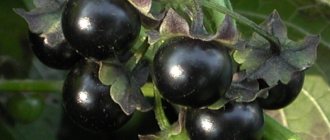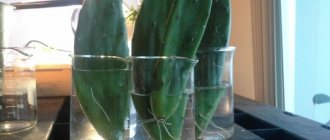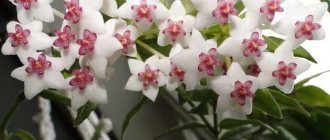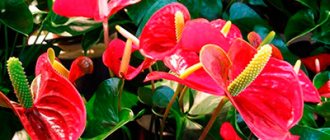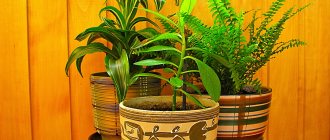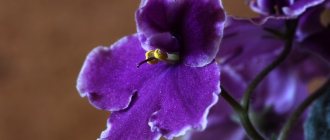Among the variety of flowers, a separate group can be distinguished, which includes small indoor plants.
Beauty Saintpaulia
They are beautiful in all respects: they do not take up much space, do not require special care, and at the same time delight the owner with abundant flowering, decorative foliage and various shades of thorns.
Kalanchoe
Dwarf kolanchoe is a miracle of nature, which breeding scientists presented to the world in the form of several varieties, rich in a variety of colors: from white and cream to pink and bright red.
This decorative mini-plant is not afraid of the sun and prefers a lot of light. Small rose inflorescences of double or single flowers are collected in a neat bouquet, framed by frequent, succulent leaves.
Dwarf Kalanchoe rarely grows above 10-15 centimeters and is not at all demanding in care: it is enough to regularly water and replant the plant.
Despite all the advantages and visual attractiveness, it is very difficult to find dwarf varieties of Kolanchoe for sale. A miniature indoor flower retains its decorative properties all year round. And if you select the right pot, it looks like a stylish accessory.
Lithops
We decided to take this succulent out separately. It has a developed root system, and the above-ground part is more reminiscent of a stone than a plant. In fact, that’s what they’re called – living stones. For lithops you will have to find a sunny place and provide rare but abundant watering. If you want to wait until flowering, do not turn the pots. In summer, lithops can be taken outside - this will harden the plants.
Lithops also feel good in florariums.
- How to make a florarium with your own hands and care for it
Do you dream of your own garden, but you don’t have a dacha, or even a balcony? Let's try to make a florarium - a mini-greenhouse behind glass.
Echeveria
Echeveria is a succulent plant classified as a perennial herb. The diameter of the rosette is only 15 centimeters, and the height is from 10 to 30 cm. At the moment of flowering, the succulent is surprisingly transformed: it seems that the plant is made of artificial flowers.
Small bell-shaped corollas of pink, yellow or brown colors are located on a dense long stem-peduncle with a paniculate inflorescence.
The low-growing bush itself consists of a large number of leaf rosettes, colored bluish or bright green. Although the plant is unpretentious, its dense, fleshy leaves are quite vulnerable.
Each of them is covered with a thin whitish coating, under which moisture and nutrients accumulate. At the slightest touch, the delicate shell is easily damaged and the plant suffers.
To avoid this, you need to place the unusual flower under glass or cover it with film. The mini-flower needs good lighting, regular watering and weekly feeding with special nutritional mixtures for succulents.
Lemon
Yes, we decided to start with a fairly large (with proper care) plant. If the size of your home allows you to place one large flowerpot, then make your choice in favor of a lemon. Shape its crown so that the representative of the Citrus family grows in height. This way you will save free space. Lemon will attract the eye with its beautiful green foliage, and during flowering it will fill the room with a delicate aroma. In addition, its flowers look very beautiful. A self-grown sour delicacy should be an additional incentive for you to purchase lemon.
- Top 5 Citrus Fruits You Can Easily Grow (and Eat) at Home
You can grow more than just the usual lemon from a seed at home!
Decembrist
Zygocactus Schlumbergera or Decembrist is a beautiful ornamental plant, which is a representative of the genus of epiphytic cacti. The main difference between the Decembrist and many other indoor plants is that its flowering begins at a time when most ornamental crops enter a dormant period.
If you keep watering the plant to a minimum for 6-8 weeks from the end of September, in winter the Decembrist will delight lovers of indoor plants with bright flowers of pink, red and orange or white.
If cacti usually respond well to sunlight, then the Decembrist requires obligatory shading, otherwise the final fragments of the stems will begin to die off. In general, the plant is not too demanding to care for. However, it needs adequate watering, diffused light and good air humidity.
If the Decembrist is provided with suitable conditions for development and growth, then it will delight with its flowering for 15-20 years. A compact bush strewn with graceful flowers looks very unusual in winter.
Beautiful flowering miniature plants
Among the huge variety of species and varieties of miniature flowering plants, it is very difficult to single out favorites and give preference to any one species. They are all beautiful and each of them deserves attention.
However, you should know that caring for miniatures requires increased attention at each stage of its vegetative development.
After all, how abundant and long the flowering of plants will depend on proper lighting, watering, and fertilization. Let's look at small indoor plants that delight us with huge flowers.
Miniature Saintpaulias
Avid violet lovers, for whom the number of varieties plays an important role, have increasingly begun to breed miniature copies of the queen of flowering plants - Saintpaulia. Apart from their small size, mini-violets are no different from their standard counterparts.
Miniatures can be divided into 3 groups:
- Microminiature plants, the rosette diameter does not exceed 60 mm.
- Semi-miniature Saintpaulias with a rosette diameter of 150 mm.
- Semi-miniature, the rosette in diameter does not exceed 200 mm.
The main advantage of mini Saintpaulias is their small size. Even in a small apartment, you can grow many varieties of violets. Their growth does not affect flowering in any way. Saintpaulias bloom with large flowers of various colors. There are delicate, rich, with borders and ruffles, with inclusions and stains, overflows.
Miniature Gloxinia
The line of miniatures is represented by 7 varieties:
- Mini red.
- Ringing bells.
- Delicate soufflé.
- Mini Me.
- Silvana Pink.
- Salto Red.
- Soft light.
All dwarf gloxinia (syningia) have a dormant period. Only in the first year of life, if they are grown from seeds, the growing season lasts the whole year. When the miniatures develop a good root system and a nodule appears, then they will retire.
Gorgeous gloxinia
Pots with a diameter of no more than 6.5 cm are suitable for growing miniatures. Gloxinia flowers can be simple, double, or densely double, and the color palette will satisfy even the most avid gardener.
Miniature Kalanchoe
Another mini flower that deserves attention. If we compare it with an ordinary Kalanchoe, the miniature does not exceed 15 cm in height, which is 10 cm lower than standard specimens. As a result of breeding work, several varieties were obtained, for example, Kalandiva mini and Mini Make. Kalanchoe blooms with red, white, pink and cream flowers.
An unpretentious plant does not require special knowledge and skills when caring for it. The flower requires timely watering, fertilization, crown formation and annual replanting in new soil.
Crassula oval
Crassula oval is an unassuming semi-herbaceous plant, which in our country is more often called the money tree or the tree of happiness. The flower requires virtually no care.
All this plant needs is moderate watering, bright lighting and good air ventilation. The fat woman takes root well in sunny and bright corners of any apartment. It will look great in the company of relatives or other succulents as part of a decorative composition.
Succulents
If every centimeter of space counts for you, as well as time for care, choose succulents. These babies look fantastic. They will fit perfectly into a high-tech apartment. They can decorate window sills, work areas and even shelves. Succulents also look interesting in hanging flowerpots. And recently it has become fashionable to create mini-gardens from them.
- A garden of succulents on a windowsill - which ones to plant and how to care for them
Compositions made from succulents are a wonderful decoration for any apartment.
Pedilanthus
The plant is named so because of the appearance of its spectacular inflorescences. So “pedilon” translated from Greek means “shoe”, and “anthos” means flower. It is because of the original flowers that the plant is popular among gardeners.
The appearance of pedilanthus is very diverse and can differ strikingly from each other depending on the climatic and natural conditions of their growth.
Pedilanthus titimaloides is a very pretty and unassuming plant, which is a highly branched small shrub. This plant has interesting foliage that is dark green with whitish flecks along the center and edges.
Pedilanthus largefruited is a succulent that has almost no foliage, but has large, round, water-storing shoots. Pedilanthus spurs looks like a small tree.
In indoor conditions, plants need regular and abundant watering, as they prefer highly moist soil. They are light-loving and thrive on sunny south-facing windowsills.
Most of our living spaces, unfortunately, are small in size, and not every gardener can afford to keep large indoor plants in a limited area.
In this case, compact representatives of ornamental crops, which are no worse than their tall counterparts, can become an original decoration of any interior.
Everyone can afford to choose a plant to their taste: beautifully flowering, deciduous or succulent. It can become part of a stylish decorative composition, and at the same time it will not take up much space in the apartment.
- Author: Inna Kiseleva
Moss
Moss can be grown in small containers; it looks especially impressive in unusually shaped pots. In general, the options for using moss in an apartment can only be limited by your imagination.
Moss can be purchased at the store, or you can bring it from the forest. To do this, you just need to remove the top layer along with the turf, then you don’t even have to prepare the soil for planting. If you decide to use store-bought moss, then place expanded clay or small pebbles on the bottom of the container, and then granulated coal.
Immediately after planting, the moss will need daily spraying with cool water, then watering once every 3-4 days will be sufficient.
Moss can be used in vertical gardening. A wall with a panel of stabilizing moss will certainly become the main accent of the room. Panels can be of any shape and size. Fluffy green rugs are pleasant to the touch and perfectly absorb sound.
- Greening walls with stabilized moss
Ideas for landscaping at home are suggested by nature itself. Stabilized moss is an original find in phytodesign.
Boxwood
A beautiful evergreen plant grows up to 12 m. Garden boxwood can be grown indoors. Dense greenery, forming a dense crown, will decorate the design in an oriental style. Don't forget that boxwood is considered a long-liver. With proper care, it will delight its owners for many years.
The planted shoot grows slowly, up to 5 cm per year. Around the columnar trunk, many shoots are formed, covered with small shiny leaves.
There are more than 50 varieties of boxwood. The following varieties are suitable for home breeding:
- evergreen;
- small-leaved;
- Balearic Islands.
A handsome evergreen man needs circular pruning. Boxwood branches grow quickly. A regular haircut gives the plant a well-groomed appearance. A compact boxwood figurine will be a wonderful decoration for an apartment or office. This decorative beauty perfectly purifies the air. It should be remembered that its stems and leaves are poisonous. It is not recommended to place boxwood in the nursery. Greens are also dangerous for pets.
Potted roses
You can’t do without the queen of the garden at home. It seems that no one will dispute the beauty of this flower. A sophisticated plant does not require much space, and you can choose varieties to suit every taste. Dwarf roses come in a variety of colors, and you can choose flowers that have a strong scent. As a rule, indoor roses have a long flowering period.
- Growing roses on a windowsill - how to preserve and prolong flowering
Did you get a rose in a pot as a gift on March 8? That’s great, which means you’ll enjoy its flowering longer than with a regular bouquet.
A small apartment is not a reason to deny yourself the charm of fresh flowers. This is more of a challenge, and if you accept it, you will be surprised how flower arrangements will change your home. Definitely for the better.
Violets
Perhaps this option can be called classic. Violets grow without problems in small containers, do not take up much space, but at the same time they cannot be called inconspicuous. Their bright colors include not only all the colors of the rainbow, but also all possible shades. So if you want to add some color to your apartment, then create a multi-colored ensemble on the windowsill. A monochromatic composition will look no less attractive.
- 6 reasons why violets don’t bloom at home
Capricious Saintpaulia refuses to please with lush flowering? Let us help your grief!
What defects are unacceptable on wood and how to identify them visually
- Rot is dark and reddish areas, the structure of the tree itself is loose and fragile.
- Fungus - has a grayish or bluish tint. These microorganisms contribute to wood rotting. You can get rid of fungus by treating timber with antiseptic compounds.
- Internal sapwood. The sapwood is the part of the trunk that surrounds the heartwood. Inner sapwood, located in the core, is formed as a result of disruption of the normal growth of the tree. It is a serious defect for construction timber, as it significantly reduces strength. At the end it appears in the form of light rings of different widths against an overall darker background. On lumber, the inner sapwood is distinguished by light stripes.
- Wane – bark on the edges of boards. This defect leads to a violation of the geometry of the lumber, further infection by microorganisms and damage by insects.
- Germination. The presence of living or dead bark in the body of the timber. This defect appears due to mechanical damage to the trunk during growth.
- Cracks. They are formed either as a result of sudden changes in climatic conditions during tree growth or during the drying period.
- Wormholes. Damage caused by insects weakens the timber and significantly reduces its performance characteristics.
The most unpretentious indoor plants with photos
Choosing what type of wood to build a house from, and purchasing timber, taking into account all the factors stated above, are responsible events on which the comfort, reliability and durability of the future home depends.
Hovea
The perennial plant Howea belongs to the palm family. Under artificial conditions, the trunk, covered with ring-shaped scars, grows to the ceiling. The feathery leaves form a shady canopy. Howea wears out due to lack of light. It should be placed in a spacious room, closer to windows facing south. Watering should be moderate in winter and abundant in summer.
Palm trees do not tolerate dry air well. Due to lack of moisture, its leaves begin to turn yellow. From time to time, greens should be sprayed with water at room temperature. It is important not to let the lump of earth in the pot dry out. To prevent this from happening, in case of prolonged absence, a self-watering system is necessary.
The perennial palm tree grows to gigantic size, spreading its feathery leaves widely. It must be placed in spacious rooms. Green beauty cleans the air well. Its leaves are safe for pets and small children. Hovey can be placed in a large nursery.
Bonsai
this is a miniature copy of a tree. The idea of growing dwarfs in pots came to us from China. Asian bonsai is not just a small flower in a pot. This is a work of art and the embodiment of living sculpture. Growing miniature trees is a kind of ritual, the goal of which is to create a miniature copy of nature.
Growing bonsai requires special skill and patience. Coniferous trees, fruit trees and specimens with finely curled leaves are suitable for breeding. Beautiful bonsai are obtained from curly willow and birch. A rooted seedling is planted in a pot. Lawn grass is sown around for aesthetics. For several years now, the Christmas tree or birch tree has been well cared for, giving it the desired shape. This is achieved by pruning old branches and new shoots with a clothespin. All this time, the bonsai needs to be watered in a timely manner and fed as needed. If you monitor the growth of shoots and regulate their growth, over time you can get an elegant dwarf mini-tree.
Wolfia rootless
In warm climates, in the Mediterranean, South America, and southern Asia, rootless wolffia can be found in water bodies. This plant is so small that it is often not visible to the naked eye. Sometimes the oval leaves grow up to 1 mm. These green balls float on the surface of the water, and when unfavorable conditions occur, such as in winter, they sink to the bottom, only to rise to the surface when it gets warmer.
Wolffia feeds on nutrients dissolved in water and is almost constantly in a state of division. Wolfia was also found on the territory of Russia, for example, in reservoirs of the Voronezh and Bryansk regions.
Baby conifers
Among conifers, dwarf forms of various types of cushion-shaped spruce (Little Gem, Maxwelli, Nidiformis, Pygmaea, Conica), pines (Mops, Mini Mops, Brevifolia, Nana, Gnom), thuja (Danica, Tiny Tim), junipers (common Green carpet, horizontal Blue Pygmea, Blue Chip, Golden Carpet and Wiltonii, Cossack Variegata, scaly Blue Carpet ).
Again, if you set a goal and find tiny specimens of coniferous plants from private collectors, you will find Pinocchio spruce, Itti-Bitti spruce and others among them.
Gray spruce Pinocchio



